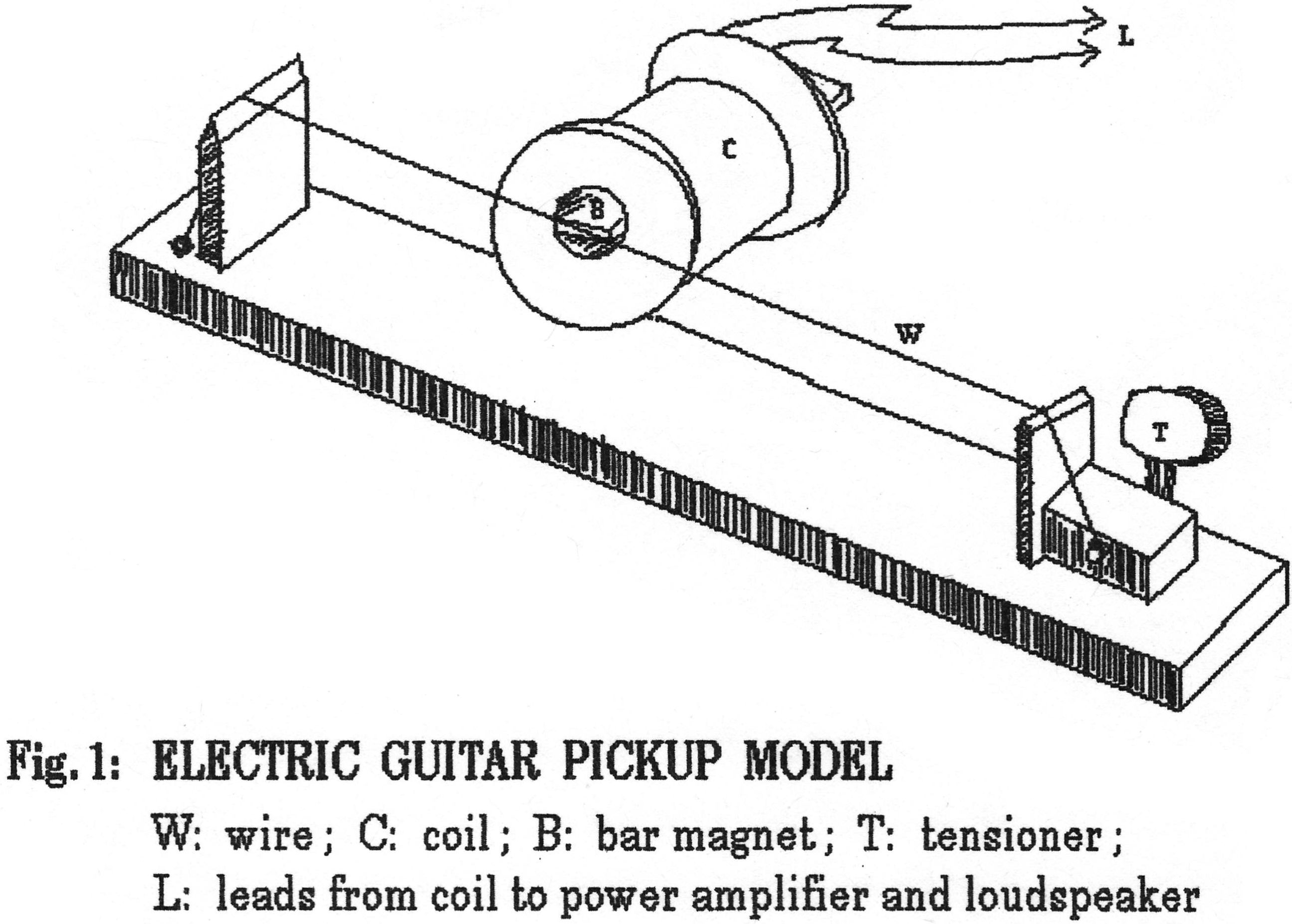An Electric Guitar Pickup
January 01, 2001 Filed in:
Demo CornerPeter Scovil, Waterford, ON
petescov@enoreo.on.ca
I like music, and enjoy playing the guitar, so the following demo caught my eye (or ear?). It was in the Jan. '95 issue of
The Physics Teacher (p.58) by G.R. Davies of South Africa. It is a good example of electromagnetic induction that is easy for students to understand. I use my sonometer (which conveniently has a steel wire) and a coil with a magnet inserted inside it. The pole of the magnet and the coil are placed very close to the wire. Davies suggested a bar magnet (see diagram), but I have a strong horseshoe magnet, and it works fine. I run the wires from the coil to a Radio Shack mini amplifier-speaker (cat #227-1008C), and get a good sound out of it. A better amplifier is even more impressive. The students can easily understand that the magnet magnetizes the portion of the steel wire near the magnet. The vibrating magnetized wire provides a changing magnetic field that will induce an alternating voltage in the coil at the same frequency as the wire itself. The magnet and coil form essentially an electric guitar pickup.

Last year, as I was teaching harmonics on a vibrating string, I was (after 32 years teaching physics!) trying to think of a better way to show nodes and antinodes on a vibrating string when the amplitudes involved are too tiny to see. Obviously, a microphone will only pick up the dominant sound of the resonance box. But the guitar pickup only responds to the vibrations of the string, not the sound itself. I connected the coil to the mini amplifier input, but then connected the output to an oscilloscope. Then, when the coil was placed near a node, no wave patterns were seen, whereas at an antinode, the waves had a reasonable amplitude. This can be confirmed by replacing the oscilloscope with a speaker. With an understanding of harmonics, students should be able to predict where nodes and antinodes occur, and then test their predictions. This setup is good for showing the vibration of the string right at the point where the pickup is located. A microphone is better for showing overall waveform of the sound that you actually hear.
Column Editor: Ernie McFarland, Physics Department, University of Guelph, Guelph, Ontario, N1G 2W1 Tags: Electricity, Magnetism, Waves and Sound


